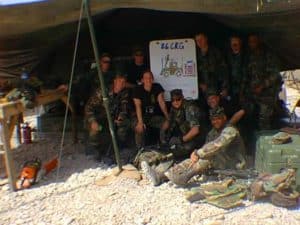
As leaders, a key to success is in understanding the last part of the sentence: “…what it is.” It might be something we have control over, something we can only influence, or something that affects us and our people but is out of our hands. How quickly we ascertain which of the three It is, and how we communicate that to those who work for and with us often determines whether we (the royal WE) are going to rise above the challenge.
In a past life, I commanded an organization responsible for deploying personnel to all parts of Europe and Africa. We were too short staffed in certain specialties to do what were we being asked to do, and getting additional manpower was out of our control. What was in our control was how we used the personnel we had.

This speaks to three core truths of leadership: leaders create “we” organizations; leaders don’t play the victim; and, leaders help others manage change.
As the chief executive, my job was to instill a sense of shared purpose, creating a “we” organization that excelled at overcoming adversity and delivering client success. Those given additional training knew they’d be asked to work harder but were willing to give their discretionary effort to reduce the burden on their teammates. If you know your organization has spare band-width in some areas, maybe you can tap into it through a renewed sense of shared purpose.
When leaders fail, they can’t play the victim. I tried so many times to get additional personnel, they called me Kevin de la Mancha. As frustrating as it was, we didn’t sit around and blame others for not being able to accomplish the mission; we got off our morass and found an alternative that gave us control back. If you’re not encouraging your people to find innovative ways to overcome It, they may not think you have what it takes to lead them to greater successes, and they’ll be wary of following.
Leaders have to model change resiliency; if you don’t have it at the top, you won’t find it at the bottom. By understanding and anticipating resistance to changing the status quo, hierarchical way of tasking, it was easier for me to communicate the positive effects we could generate (both up and down the chain of command) and involve those most affected in the implementation plan. When those affected demonstrated their buy-in, it silenced the nay-sayers and motivated others to want to do more work for the good of the team.
How are you dealing with It? Are you resigned to suffer its impact on your organization, or are you aggressively developing alternative strategies to deliver success by giving your people the tools and opportunities they need to exceed expectations?
Overcoming It depends on you.

